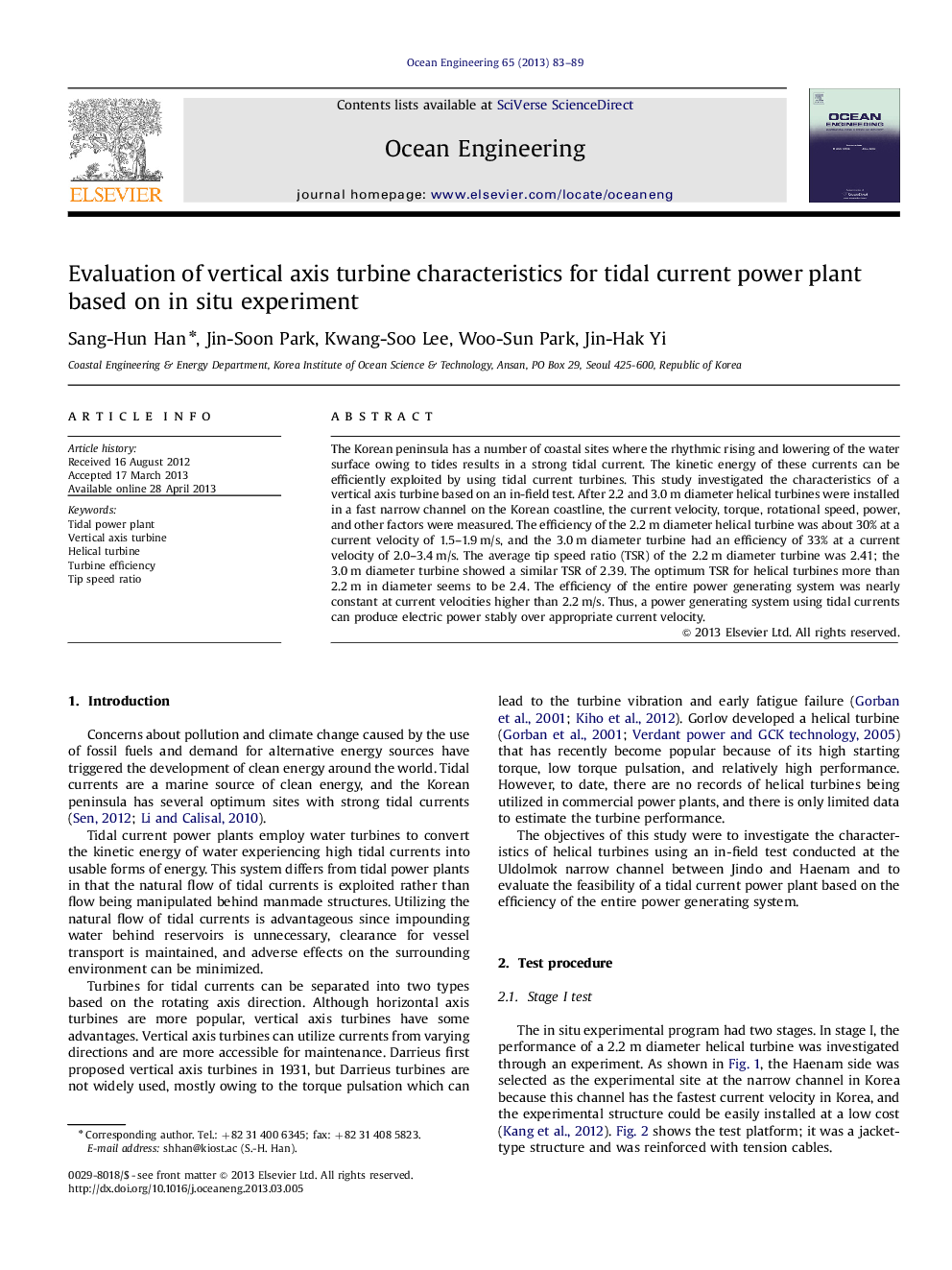| Article ID | Journal | Published Year | Pages | File Type |
|---|---|---|---|---|
| 1725918 | Ocean Engineering | 2013 | 7 Pages |
•This study investigated the characteristics of 2.2 and 3.0 m vertical axis turbines based on an in-field test.•The efficiency of the 2.2 m diameter helical turbine was about 30% at a current velocity of 1.5–1.9 m/s.•The 3.0 m diameter turbine had an efficiency of 33% at a current velocity of 2.0–3.4 m/s.•The efficiency of the entire power generating system was nearly constant at current velocities higher than 2.2 m/s.
The Korean peninsula has a number of coastal sites where the rhythmic rising and lowering of the water surface owing to tides results in a strong tidal current. The kinetic energy of these currents can be efficiently exploited by using tidal current turbines. This study investigated the characteristics of a vertical axis turbine based on an in-field test. After 2.2 and 3.0 m diameter helical turbines were installed in a fast narrow channel on the Korean coastline, the current velocity, torque, rotational speed, power, and other factors were measured. The efficiency of the 2.2 m diameter helical turbine was about 30% at a current velocity of 1.5–1.9 m/s, and the 3.0 m diameter turbine had an efficiency of 33% at a current velocity of 2.0–3.4 m/s. The average tip speed ratio (TSR) of the 2.2 m diameter turbine was 2.41; the 3.0 m diameter turbine showed a similar TSR of 2.39. The optimum TSR for helical turbines more than 2.2 m in diameter seems to be 2.4. The efficiency of the entire power generating system was nearly constant at current velocities higher than 2.2 m/s. Thus, a power generating system using tidal currents can produce electric power stably over appropriate current velocity.
